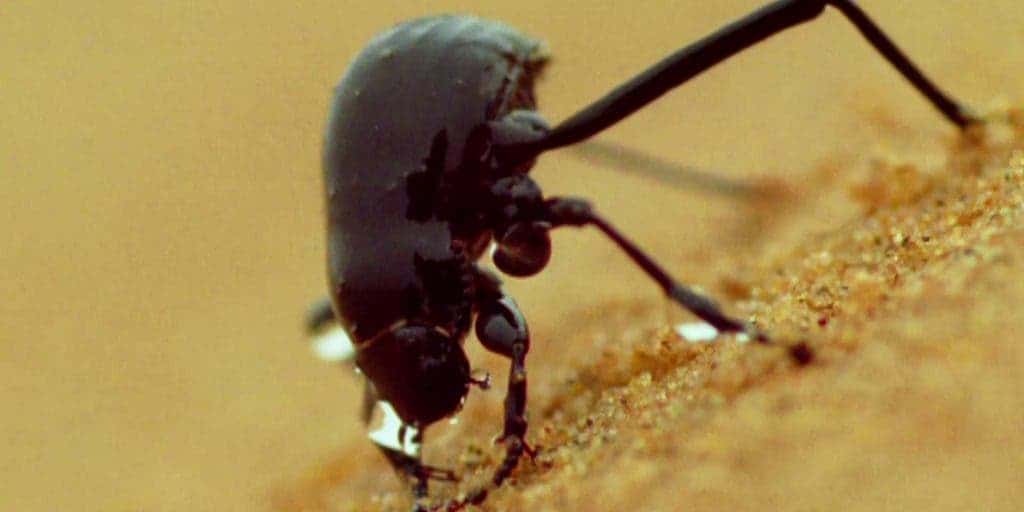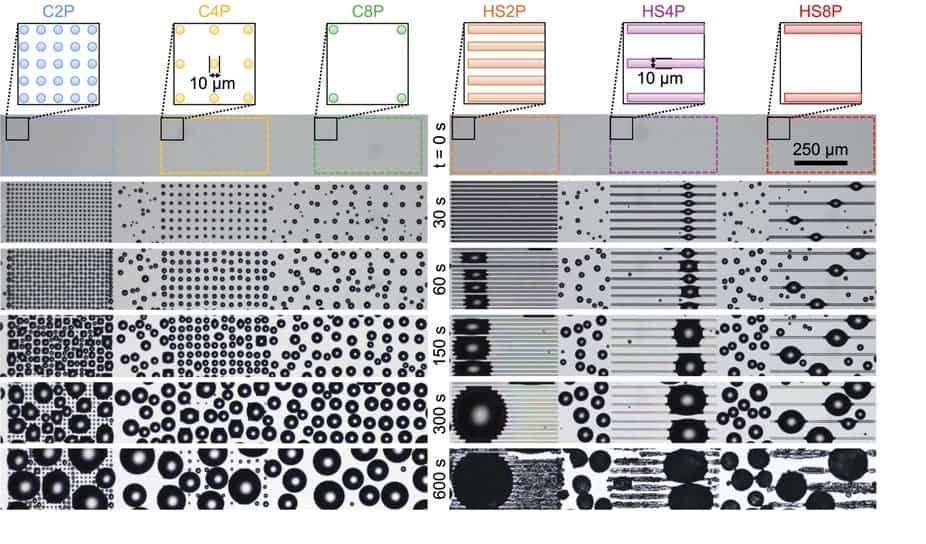The Namib Desert Beetle lives in one of the most inhospitable and driest places on Earth, in the southwest coast of Africa. The beetle, however, employs a nifty trick: it can virtually make water out of thin air, thanks to its body whose geometry collects water droplets and directs them right into the insect’s mouth. Now, engineers have adapted this design to keep ice bridges from forming and keep critical aircraft components freeze-free.

The Namib Desert beetles harvest water droplets from the air. Image: Wired
For a while, scientists have been studying Namib Desert beetles, better known as Darkling beetles (family Tenebrionidae), to understand what roles its body’s structure, chemistry, and behavior play in capturing water from the air. We now know that micro-sized grooves and bumps on the beetle’s forewings condensate and direct water straight to the beetle’s eager, thirsty mouth. The structure of the forewings is a combination of hydrophilic (water attracting) and hydrophobic (water repelling) areas. To maximize harvesting efficiency, a Darkling beetle will stick its rear end up in the air if it senses a foggy wind.

Bumps attract water, flat areas repel water. Source: Dew condensation on desert beetle skin, Springer.
Jonathan Boreyko, an assistant professor of Biomedical Engineering and Mechanics in the Virginia Tech College of Engineering, and colleagues mimicked the Darkling beetle’s dew capturing mechanism with a different goal in mind. On an airplane or elsewhere, ice spreads by making ice bridges across water droplets. In no time, ice can spread across a whole surface and only one frozen droplet is enough to start the chain reaction.
To replicate the unique patterns of bumps on the beetle’s shell, researchers overlaid water-attractive patterns on a water-repelling surface, using photolithography.

The colored shapes in the schematics represent the hydrophilic features while the white background is hydrophobic. Time zero corresponds to the onset of cooling from 10 °C down to a steady-state temperature of Ts = −10 °C from 30 s onward. Source: Scientific Reports
“We made a single dry zone around a piece of ice,” Boreyko said. “Dew drops preferentially grow on the array of hydrophilic dots. When the dots are spaced far enough apart and one of the drops freezes into ice, the ice is no longer able to spread frost to the neighboring drops because they are too far away. Instead, the drops actually evaporate completely, creating a dry zone around the ice.”
Frost-free zones could be tailored on critical sections like around the wind turbines or airplane wings. Ice accretes on the external parts of an aircraft is most often the result of the impact of supercooled water droplets of various sizes on that aircraft. This may happen within cloud or when flying through precipitation. Generally, these are defrosted using radiators. This of course comes at an energy cost, and significant savings might be possible simply by configuring the geometry of the surfaces. “I appreciate the irony of how an insect that lives in a hot, dry desert inspired us to make a discovery about frost,” said Boreyko, lead author of the paper published in Scientific Reports.
Previously, a team mimicked the Namib Desert beetle to design a self-filling water bottle.









